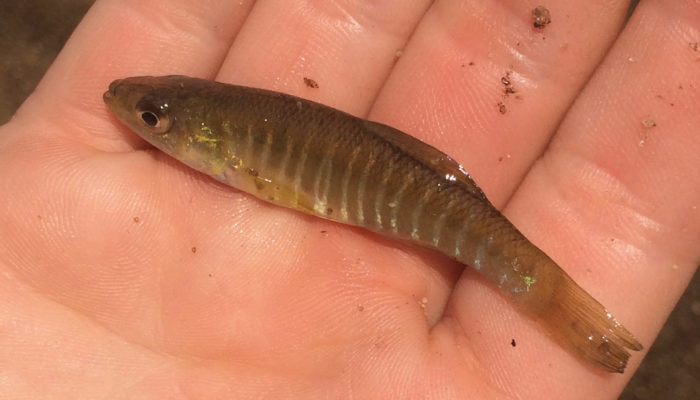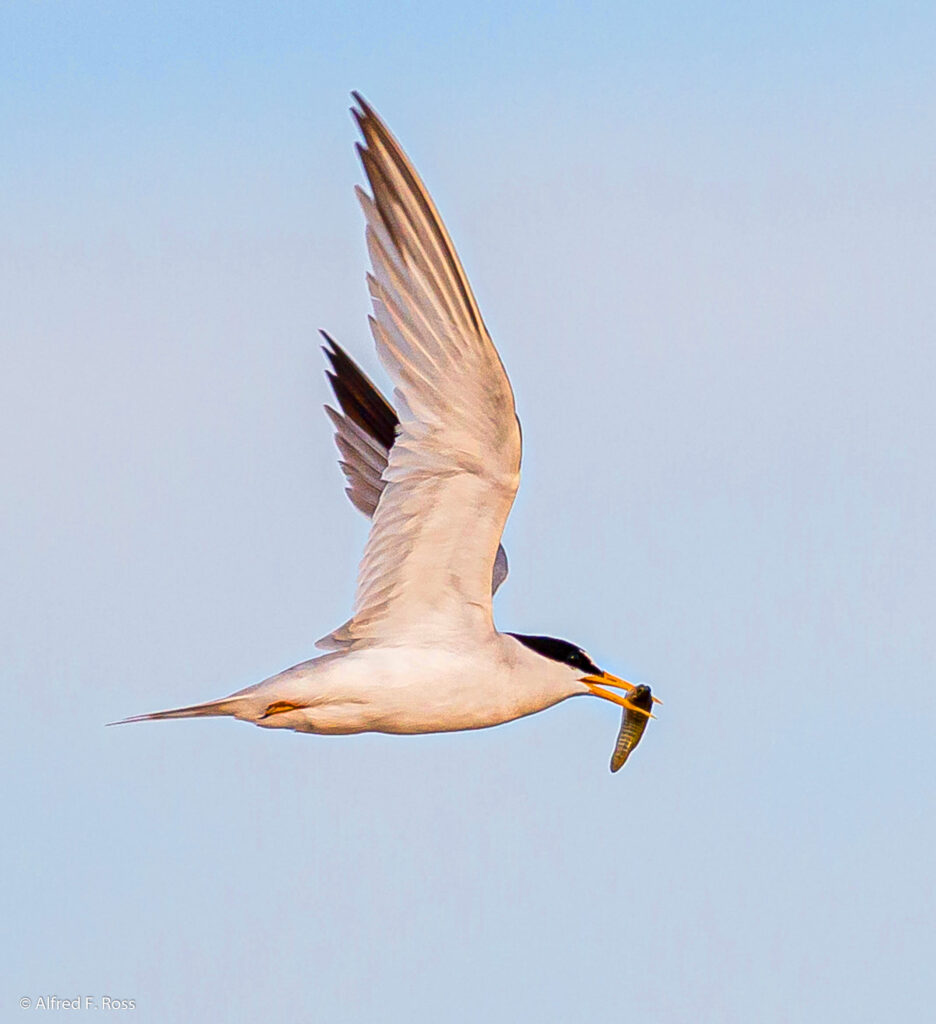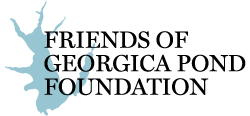There is perhaps no other fish better adapted to the conditions at Georgica Pond than the Mummichog (Fundulus heteroclitus). This small, plain-looking fish plays a major role in the ecology of Georgica Pond, is an important economic resource, and was part of an historic experiment as the first fish ever sent to space.
Its wonderful name—Mummichog—is a Narragansett term which means “going in crowds,” which is a perfect description of the schooling behavior of the Mummichog and some other killifish species, as well as the Sheepshead minnow. All relatively common in Georgica Pond. These schools of small fish often referred to as “bait fish” can be easily viewed in the shallow waters of the pond’s edge. Carl Linneaus, the Swedish taxonomist first described the Mummichog in 1767. Its Latin name, Fundulus means a bottom dwelling species.

Natural History of the Mummichog
One of the things that makes Georgica Pond so interesting ecologically is its constantly changing conditions. The salinity, temperature, and dissolved oxygen can all change radically in a fairly short period of time. The Mummichog can tolerate very low dissolved oxygen conditions and has been known to resort to aquatic surface respiration (the surface layer of pondwater has more oxygen). It has even been known to travel short distances over land to get back to water if caught in a tidal pool for instance (or when Georgica Pond has been let).
When Georgica Pond is open to the Atlantic, its salinity is that of seawater (30 ppt—parts per thousand) but when the gut is closed for a long time the water can be close to fresh (3 ppt). Mummichogs can thrive in all of these salinities—they can also tolerate a range of temperatures. In winter they burrow in the mud to avoid freezing. Mummichogs are also tolerant to a wide range of environmental contaminants.
Mummichogs eat a variety of organisms including invertebrates, small fish, mosquito larvae, small crustaceans, and algae. They are also scavengers and will eat dead organisms helping to recycle nutrients through the pond. In turn, they are preyed upon by larger fish, birds, and especially the blue crab which is so abundant in Georgica Pond.

Monitoring of fish species by Dr. Brad Peterson of the Marine Community Ecology Lab at Stony Brook University, found the Mummichog to be easily caught in seine nets and very common at the pond.
The First Fish in Orbit
For all the above reasons, this tough little fish was selected by NASA to be sent into space. It left Cape Canaveral in July 1973 along with three astronauts in a Saturn 1B rocket. Two juvenile Mummichogs and 50 eggs were packed in small plastic aquariums with the purpose of testing what the absence of gravity would do to an aquatic species. A little while later, they landed at Skylab. Upon arrival in a gravity-free environment, the fish swam in loops not knowing which way was up while the astronauts vomited. They were both suffering from seasickness. By the third day, the fish were swimming normally. Since there is no light at the bottom of a pond, the clever little fish used the light in the Skylab as a signal of which way was up. By the third week 48 of the 50 eggs had hatched and the young fish also used the light in the Skylab as a reference. It was clear that Mummichogs could adapt to life without gravity in the Skylab.
This lowly little fish has conquered the water, almost conquered land and survived space travel. With your help, it can continue to thrive at Georgica Pond.

Special thanks to Dr. Howard Reisman, retired professor of Ichthyology at Long Island University for editing this newsletter.
